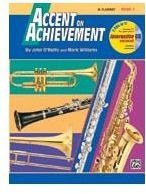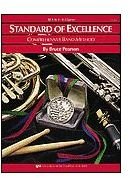How to Begin Teaching Private Music Lessons from Home
Getting Started
Starting a small business teaching private instrumental music lessons to students takes a bit of organization and dedication, but it can be done, and right form your very home.
I have been a private Music teacher for over 10 years, and I found it to be very rewarding for both the students and myself. The most difficult part, is balancing your personal schedule with your students’ schedules, and to really stick to the policies you create. You are using your home as a facility of learning and so the quality of education you are providing these new students will lie solely in your hands.
No need to fear though, for teaching private music lessons can be simple as long as you collect your thoughts, write everything down and keep good records, and allow yourself the time to become successful. It does take patience; which is actually a requirement of any teaching venture.
Here you will find some good tips to consider when first starting out with your private instrumental music lessons that will aid you in the process of building your customer-base.
Advertising
In order to develop a good clientele, you need to recruit students who are interested in taking music lessons privately. In order to target students, you need to first target their parents. Here are a few ways you could go about advertising for your private lessons:
- Place an ad in the local newspapers.
- Distribute fliers into people’s newspaper boxes or hang them on their doorknobs (I have used this method before and it works!)
- Create brochures to put on people’s cars or hand out at your local grocery stores.
- Contact your local school district and speak to the Music Department faculty to spread the word.
- Contact Music stores in your area and ask to be put on a private teacher list for music lessons. (Some stores hire their own teachers for private lessons, but others will accept inquiries and direct parents to you if you are on a teacher list.)
- Make business cards and post them on local store advertising bulletin boards.
- Write a parent letter (if you are a Music teacher in a school) that explains what private lessons entail, price information, scheduling information, and contact info.
When I began teaching music lessons from my home, I was already teaching in an elementary and middle school classroom setting, so I wrote parent letters regarding private music lessons for their children. This method got quite a bit of response. Many of these students did, however, take a break during the summer months, and to keep my supplemental income flowing, I created fliers and drove around to neighborhoods to place them in mailboxes. This too, created a small clientele for me for the summer. When the school year started back up again, I would keep those new students along with my original ones and I would build my customer-base each year in this way.
Once you get the customers (students in this case), you then need to worry about selling the skill.
Time Management & Scheduling
Once you have developed a larger customer-base, you need to start worrying about scheduling and time constraints.
Most private music instructors opt to teach students in 30-60 minute periods. I would suggest scheduling 30 minute instrumental music lessons, for your students will tire quickly and will begin to lose focus outside this time limit. Beginner students especially need to take it slow to properly develop the necessary fine motor skills and muscles associated with playing their instrument of choice.
If you schedule back-to-back lessons, just make sure you are punctual and do not go over your time. It is very hard to do, but then you will get some unhappy parents if you keep them waiting and could potentially deter them from using you as their child’s private Music instructor. (I am speaking from experience!) My policy, is that if a student is later than 10 minutes and you have another student coming right after, I would ask that parent to either reschedule for the following week or to come back later in the day if possible. This will happen on occasion, so you need to plan accordingly.
What if a student is sick and cannot attend? No problem, you can just reschedule a makeup lesson if necessary. I typically schedule a makeup right after their next lesson so the parents do not have to come back twice if possible. I will work with the student on method books for the first 30 minutes and have them work on their own music or fun songs for the next 30.
Space
Another factor to consider when building your clientele, is space. Make sure your teaching space (your home office, spare bedroom, basement, etc.) is clean, comfortable, and compatible with your teaching style and your students’ learning styles. You will need space enough for a music stand, a chair (unless they choose to stand-beginners I make sit for obvious reasons) and their instrument. Good lighting is also necessary, which can often be a problem if you are in a basement or attic/loft type situation.
Cost
A good price for your private music lessons is one that is less then the competing Music stores charge. If the local Music stores charge around $20 per half hour, then you could charge $15 or even $10, and you would be safe from too much competition. Lower prices for lessons look appealing to parents, especially those who have low income and are on a budget. Just keep in mind, according to the IRS (www.irs.gov), if you make a profit of more then $400, then you have to claim it on your taxes. This is good knowledge to have in the back of your mind when pricing out your music lesson costs.
Method Books & Equipment

Choosing the right method book to use is very important in teaching private instrumental music lessons. They need to have great information, familiar tunes, bright colors, and be visually stimulating but easy to read and understand. During my undergraduate studies, I had to do a method book project for beginner band students and out of all the books I have reviewed, there are two I like and have used the most. These include; <em>Standard of Excellence Comprehensive Band Method</em> by Bruce Pearson and <em>Accent on Achievement Band Method</em> by John O’Reilly and Mark WIlliams. I slightly prefer the Accent on Achievement books better for they are more colorful, have more recognizable tunes, and have good review techniques.
I make the student purchase the book as part of their first lesson, I charge a book fee added on to that week’s total. The parents also have the choice to buy the book on their own as well. I also use solo repertoire, scale warmups, and fun songbooks in my music lessons.
The equipment you use for your music lessons will make you look all the more professional in your business. I would suggest investing in the following equipment and additional materials:
- A good quality music stand (the black, professional ones are nice).
- A solid, student-size chair
- Extra reeds, cleaning cloths, valve oil, cork grease, and a repair kit including: screws, valve springs, corks, key pads, screwdrivers, instrument brushes, and a mouthpiece puller, are some of the basic instrument parts you should have.
- Stickers or award certificates: When my students finish book 1, I present them with a certificate of achievement. Stickers are great incentives!
- Extra method books if possible
- Progress charts/scale charts
- Your own Band instruments if you have them
If you are thinking of teaching beginner instrumental music lessons from your home, begin planning now and in just a couple of months, you will be pleased with the results, I guarantee it!
